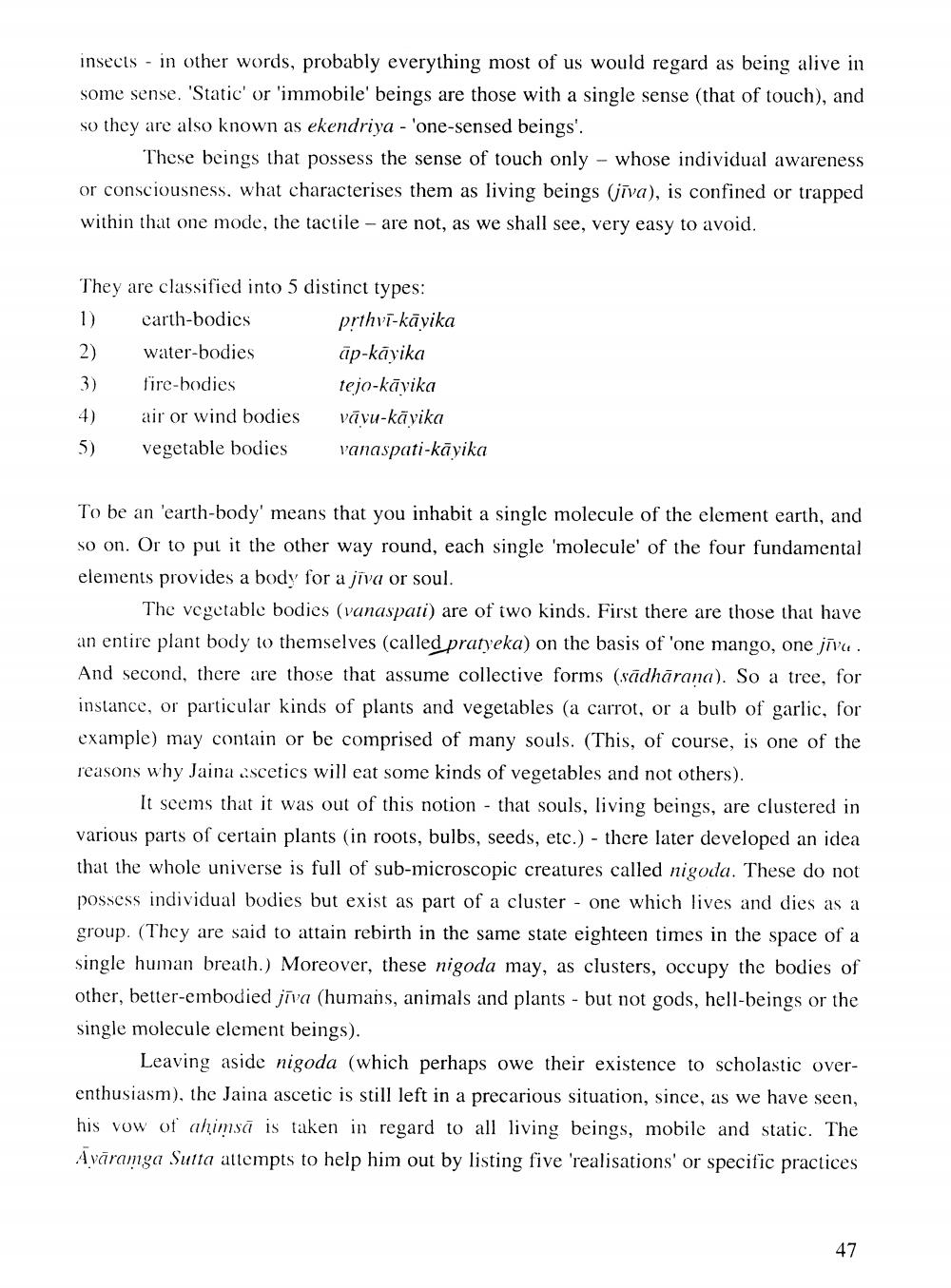________________
insects - in other words, probably everything most of us would regard as being alive in some sense. 'Static' or 'immobile' beings are those with a single sense (that of touch), and so they are also known as ekendriya - 'one-sensed beings'.
These beings that possess the sense of touch only - whose individual awareness or consciousness, what characterises them as living beings (jiva), is confined or trapped within that one mode, the tactile - are not, as we shall see, very easy to avoid.
They are classified into 5 distinct types: 1) earth-bodies prthvi-kāyika water-bodies
āp-kāyika fire-bodies
tejo-kāvika air or wind bodies vāvu-kāyika vegetable bodies vanaspati-kāyika
To be an 'earth-body' means that you inhabit a single molecule of the element earth, and so on. Or to put it the other way round, each single 'molecule' of the four fundamental elements provides a body for a jīva or soul.
The vegetable bodies (vanaspati) are of two kinds. First there are those that have an entire plant body to themselves (called pratyeka) on the basis of 'one mango, one jīvu. And second, there are those that assume collective forms (sädhärana). So a tree, for instance, or particular kinds of plants and vegetables (a carrot, or a bulb of garlic, for example) may contain or be comprised of many souls. (This, of course, is one of the reasons why Jaina ascetics will eat some kinds of vegetables and not others).
It seems that it was out of this notion - that souls, living beings, are clustered in various parts of certain plants (in roots, bulbs, seeds, etc.) - there later developed an idea that the whole universe is full of sub-microscopic creatures called nigoda. These do not possess individual bodies but exist as part of a cluster - one which lives and dies as a group. (They are said to attain rebirth in the same state eighteen times in the space of a single human breath.) Moreover, these nigoda may, as clusters, occupy the bodies of other, better-embodied jiva (humans, animals and plants - but not gods, hell-beings or the single molecule element beings).
Leaving aside nigoda (which perhaps owe their existence to scholastic overenthusiasm), the Jaina ascetic is still left in a precarious situation, since, as we have seen, his vow of ahimsa is taken in regard to all living beings, mobile and static. The Aväramga Sutta attempts to help him out by listing five 'realisations' or specific practices




